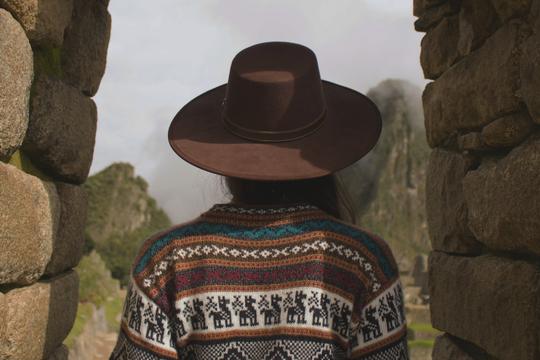
To ceviche and beyond: get a true taste of Peru
Our Roamie-ing Reporter, Claire Scott, shares Peruvian delights from the capital, coastal desert, and Sacred Valley
Peru is a country of immense things – some of the highest mountains and biggest canyons in the world, a cultural heritage that stretches back millennia, and a reputation as a world-class culinary powerhouse. Cradle of the vast Incan Empire, Peru is peppered with important historical sites, including the iconic Machu Picchu, and the country’s natural gifts abound. Trek the Andes, walk beneath the Amazonian canopy, surf northern beaches, or stand on the shores of high-altitude Lake Titicaca.
Visa requirements may change, for the most up to date information we recommend using our Entry Requirements tool. Alternatively, check the Peruvian embassy website in your country of departure.
Recommended vaccinations for Peru include diphtheria, hepatitis a, hepatitis b, diphtheria, yellow fever (if you’re visiting the Amazon), rabies and tetanus.
As advice can often change, you can check out Entry Requirements tool for the most up-to-date details on vaccination requirements.
While there’s never a bad time to visit Peru per se, we’d recommend travelling there during the dry season (May to October) when the weather is at its best. Expect sunny days and bright blue skies but chilly nights. Bring layers and bear in mind that this is the busiest time of year so plan accordingly.
Please also note that the Inca Trail is closed in February, though Machu Picchu is still open. So if you’re wanting to do the Inca Trail, then this probably isn’t the best time to travel. However, other treks are available during this period — you can find out more via our Peru destination page.
Peru is a vast country — covering everything from deserts to the Amazon Rainforest — so the weather is really dependent on where you are in the country. Overall though, you can expect the sunniest and driest weather from May to October, with temperatures plummeting at night.
December to March is the rainy season, which sees warm temperatures and frequent heavy showers across the country.
Tipping isn’t expected in Peru, though if you’ve particularly enjoyed a meal or service, then feel free to leave around 10%, which is standard practice in the more up-market restaurants.
It should be noted that tipping is an expected, though not compulsory, component of your tour and an expression of satisfaction with the people who have assisted you on your tour — including your guides for both the Inca Trail and the Lares Trek.
Recommendations for tipping drivers and local guides would range from USD $5-10 per day depending on the quality and length of the service; ask your Chief Experience Officer (CEO) for specific recommendations based on the circumstances and culture.
Tipping your G Adventures CEO is also very much appreciated. The amount is entirely a personal preference; however as a guideline USD $20-25 per person, per week is our recommendation in the region. However, if you felt your CEO did an especially outstanding job, any additional amount is always welcome.
Internet access in most Peruvian cities and towns is good but not flawless — expect it to be unreliable in mountainous areas or in more rural areas like the Amazon Rainforest.
ATMs are widely available in Peru, particularly in towns and cities. There’s a maximum withdrawal limit per day of S/.700, and you can expect fees for each transaction.
Visa is the most widely-accepted card, though there's no guarantee that your card will work here — check with your bank prior to travelling. You should also be aware that to purchase products or services on a credit card a fee of 5%-10% usually applies.
As currency exchange rates can fluctuate often we ask that you refer to xe.com for daily exchange rates.
Same-sex relationships are legal in Peru, though it remains a conservative country, so use discretion, particularly in rural areas.
As part of their commitment, all CEOs receive LGBTQ+ inclusion training so every traveller feels respected and welcomed on all of our tours. We commit to making our tours a safe and inclusive place for people to express their authentic selves without judgment, free from any discriminatory language or harassment.
While travelling with G Adventures, all travellers must treat each other with dignity and respect to create an environment that is positive, safe, and where everyone feels welcome. You can find out more via our LGBTQ+ travel page.
Around 84% of Peruvians speak Spanish, the country’s official language, but Quechua and Aymara are also spoken in many parts of the country.
Drinking tap water in Peru is not recommended, and if you’ve got a particularly sensitive stomach, you should avoid drinking drinks with ice in it too.
Please note however that all drinks provided on our tours are safe to drink (including drinks with ice), as well as the water in most hotels and restaurants visited on the tour. If in doubt, please ask your CEO for further information.
Like many other countries around the world, petty street crime can occasionally occur in cities and towns, so keep your wits about you, particularly at night. Always take a licensed taxi.
The country is also an active earthquake zone, so heed warnings from locals in case of earthquakes and tsunamis if you're by the coast.
G Adventures takes all reasonable measures to ensure your safety and enjoyment while travelling with us. All of the included activities are properly vetted and regularly checked by us, and we take great care in choosing the right transportation, stays throughout your trip and guides to lead your tour. However, there are always inherent risks when travelling — you can find out more via our travel safety page.